Alma Fria Winery
“Of the wines on today’s tasting table, only one is a Chardonnay—and I, Carroll Kemp, am the winemaker and owner of Alma Fria, which produces it.

This region, the West Sonoma Coast, is primarily known for Chardonnay and Pinot Noir.
Alma Fria is located in Annapolis, on the northern side of the West Sonoma Coast.”
According to Carroll Kemp, “In winemaking, I use a minimal intervention approach as much as possible.
After allowing natural malolactic fermentation to occur, I add just a small amount of SO₂—that’s about the extent of my involvement.
This is because my goal is to let the land’s unique character shine through in the wine.
The wine I brought today features beautifully vibrant and lively acidity, which I think really reflects this philosophy.”
While Alma Fria Winery has been in operation for 10 years, Carroll Kemp himself has over 20 years of winemaking experience.
He feels fortunate to have an excellent team working alongside him today.
Tasting Notes for Alma Fria Chardonnay 2021
Iwata Sommelier, who handled the interpretation, provided comments on each item during the session.
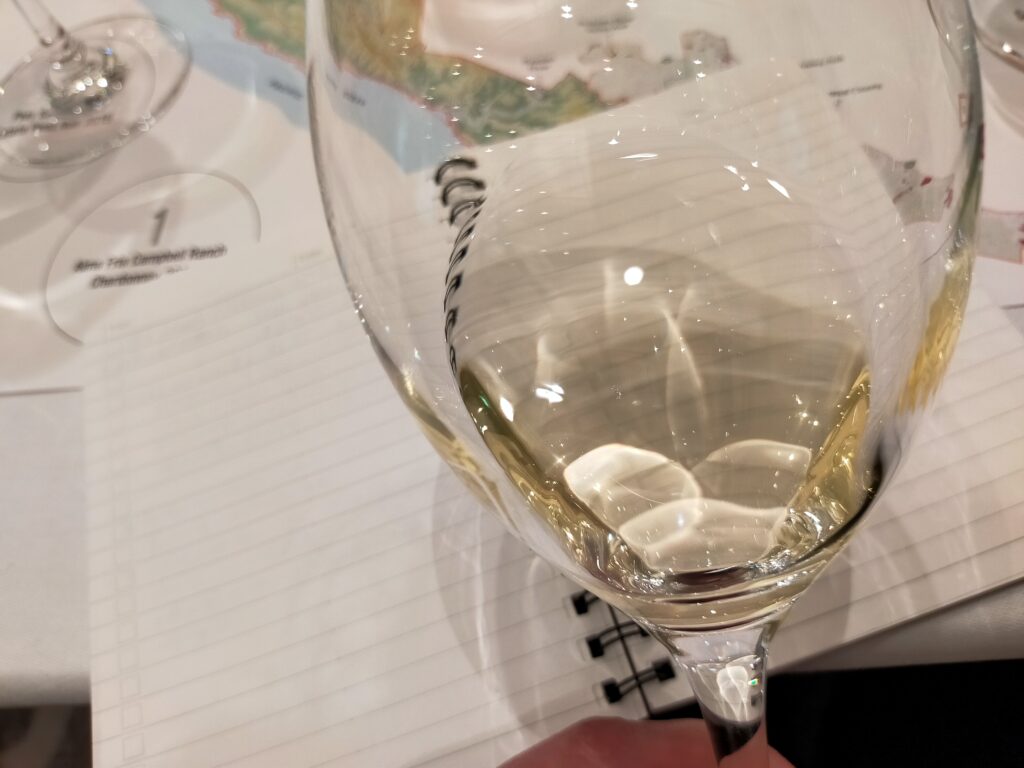
A Natural Approach and Cool-Climate Aromas
This Chardonnay reflects Carroll’s minimal-intervention winemaking philosophy, evident even in its slightly hazy appearance, as it is bottled without filtration.
Its color is a bright lemon-yellow with greenish hues, paired with a delicate yet complex aroma.
The wine’s bouquet is dominated by citrus notes like lemon and grapefruit, showcasing the influence of a cool climate.
Unlike the warmer fruit tones like peach or apricot often associated with Californian Chardonnays, this wine highlights a fresher, citrus-driven character, complemented by a honeysuckle-like fragrance.
The sur lie aging process contributes additional complexity, such as toasty aromas and hints of wild yeast, giving the wine depth and character.
High Acidity and Salty Finish
On the palate, the wine features vibrant, cool-climate acidity.
Despite undergoing malolactic fermentation, the acidity remains pronounced yet balanced, avoiding any sharpness.
The mid-palate reveals a rich texture and depth, thanks to the sur lie influence, making it a wine that is both refreshing and substantial.
The absence of strong oak flavors allows the pure expression of the grapes to shine through.
The wine’s standout trait is its saline finish, with a subtle iodine-like note lingering in the aftertaste.
Pairing Recommendation
This wine pairs wonderfully with seafood, especially shellfish, reflecting the coastal identity of its origin.
Considering Kyoto’s cuisine, a dish like shrimp balls (ebi-shinjo) in a creamy turnip soup (suri-nagashi) would be a perfect match.
The wine’s creamy texture from the lees aging harmonizes with the soup’s smoothness, while the shrimp’s savory aroma pairs seamlessly with the citrus and saline elements of the wine.
Peay Vineyards
Next, Andy Peay from Peay Vineyards introduced himself.
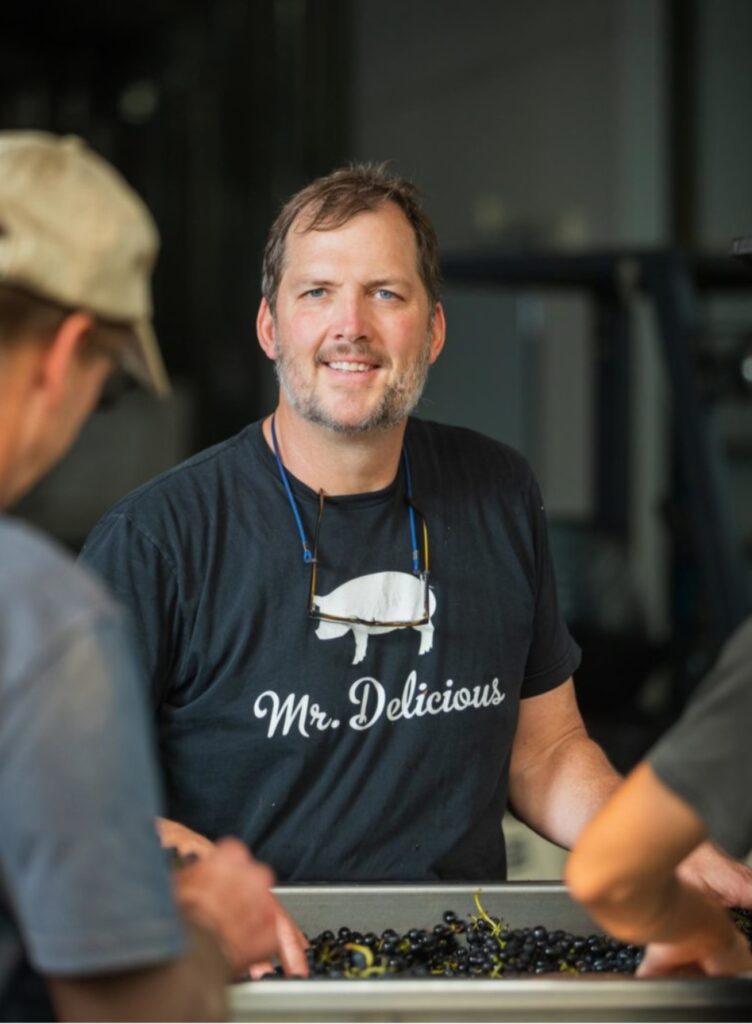
According to Peay Vineyards’ Instagram: “My name is Andy Peay.
Like Carroll, our vineyard is also located in the northern part of the region.
I run this vineyard together with my brother Nick and his wife Vanessa, who is our winemaker.
We were the first to develop vineyards in this northern area.
The Role of Fog
Andy described the vineyard’s unique location as being truly remote and isolated—perfectly fitting this description.
The vineyard sits at an elevation of approximately 200 meters.
The fog flows gently into the area through small gaps in the terrain, such as the valleys carved by nearby rivers.
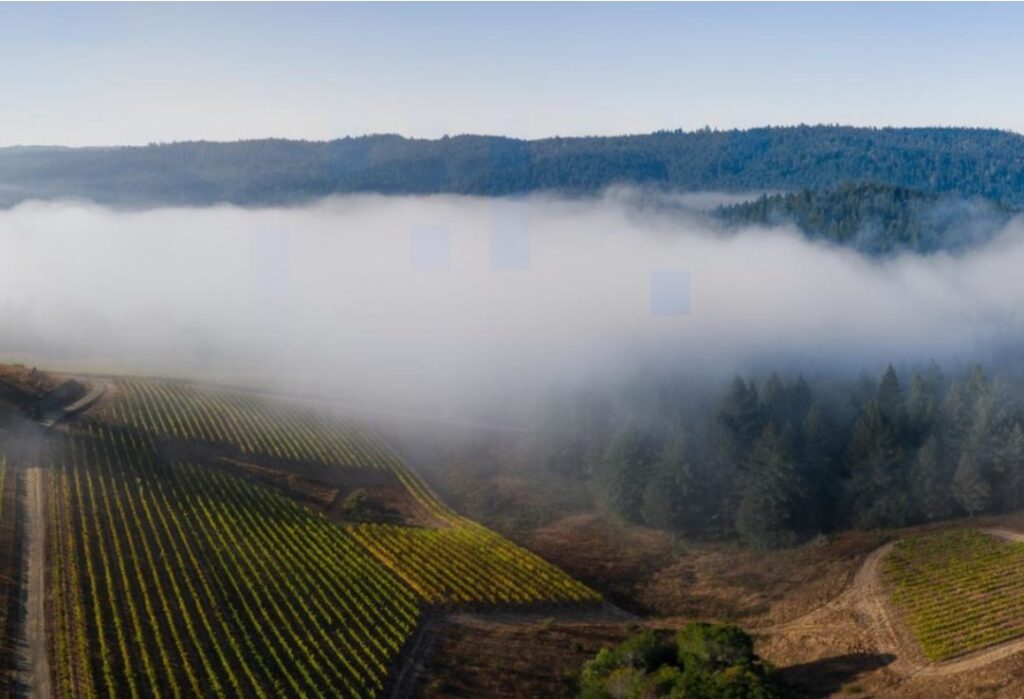
Impact on Wine
The fog and cool climate lend the wine floral characteristics, with hints of jasmine and black tea, along with earthy tones.
These elements contribute to the wine’s complexity.
The Scallop Shelf vineyard gets its name from visible traces of its past as an ancient seabed, which further highlights its terroir.
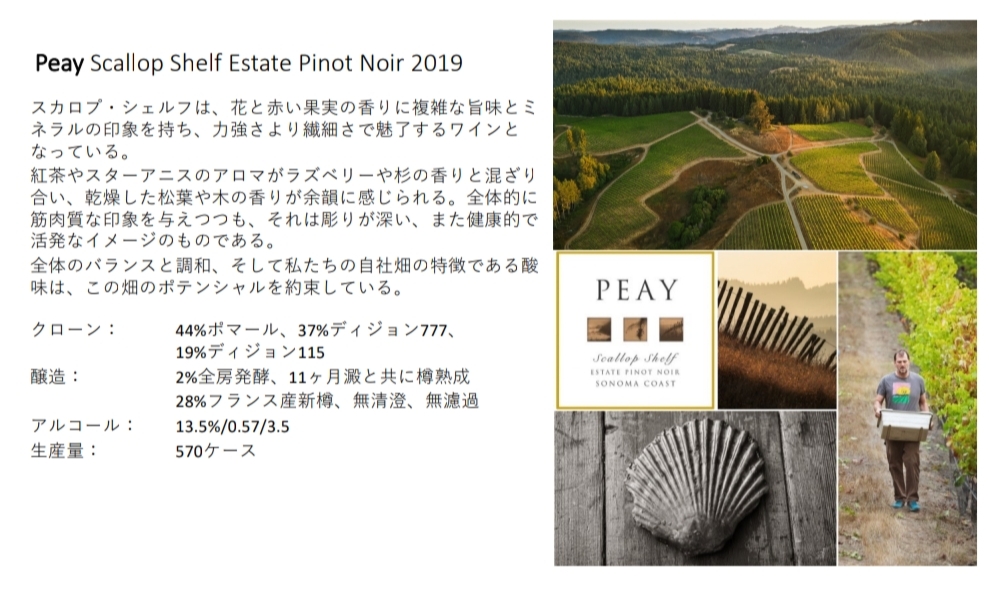
Peay Vineyards Scallop Shelf Estate Pinot Noir 2019
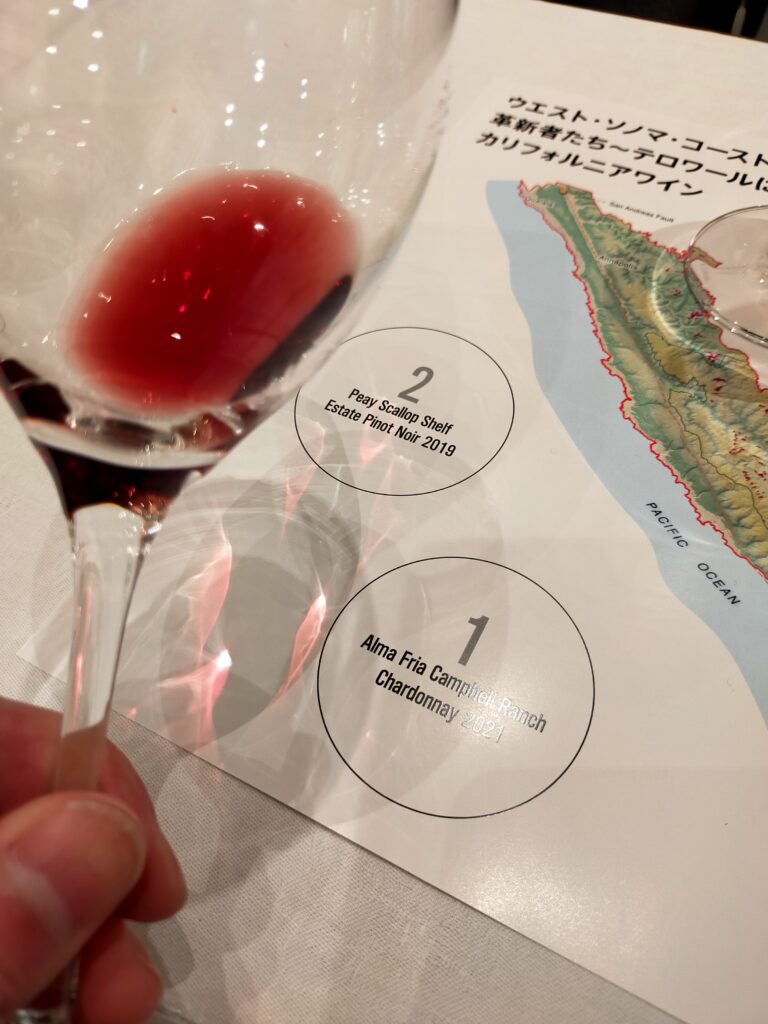
A Pure Yet Complex Wine
This wine leaves a strong impression of purity.
Its aroma is highly expressive, aromatic, and rich from the first impression.
Floral notes reminiscent of jasmine and hibiscus tea blend with red fruit, subtle earthiness, and hints of mushrooms and pinecones—creating a wine that is both pure and complex.
On the palate, the wine showcases fresh, natural fruit flavors alongside vibrant acidity, further reinforcing its sense of purity.
Highly Versatile Pairing
With its fine, delicate tannins and consistent freshness, the wine pairs beautifully with a wide variety of dishes.
As Andy Peay mentioned, it is not limited to pairing with red meat—it can complement vegetables and seafood just as well.
Since the season for bonito (katsuo) is approaching, this wine would be a fantastic match for seared bonito cooked over straw flames. The smoky aroma of the fish would harmonize perfectly with the wine’s bright citrus and slight saltiness.
Littorai Wines
Next, Ted Lemon from Littorai Wines shared his insights.
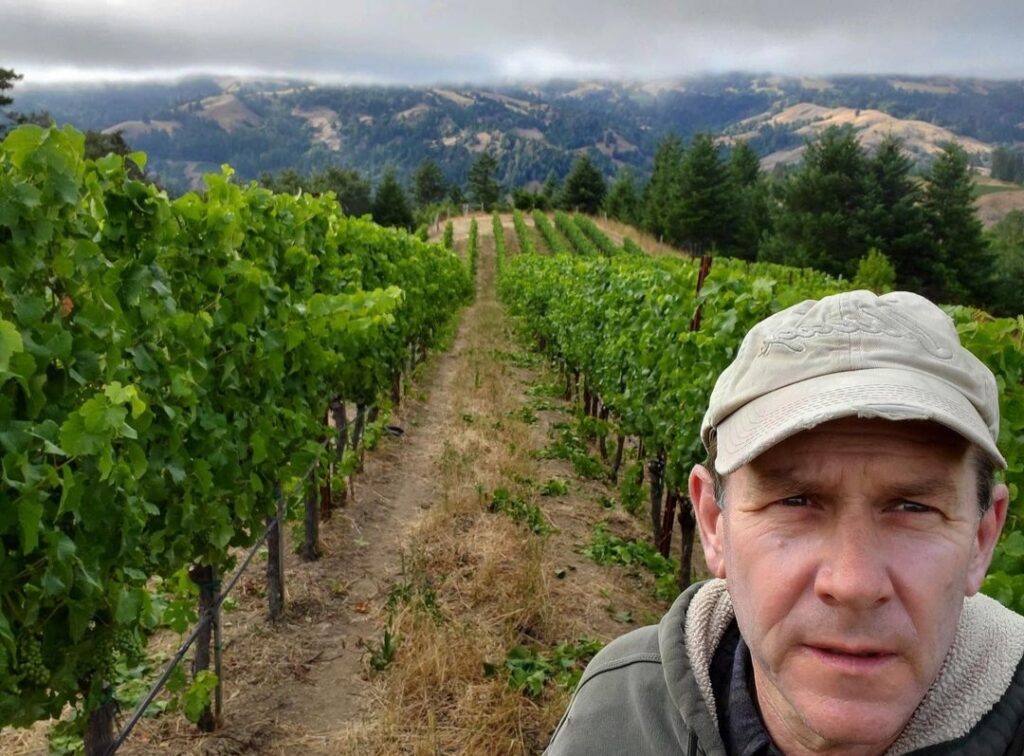
“I have been making wine here at Littorai for 31 years.
The official recognition of the West Sonoma Coast AVA is a moment of great joy for our group—though it has certainly taken a long time to achieve.”
A Complex Environment Beyond Just Distance from the Ocean
Over the past 31 years, Littorai has established numerous single vineyards across the region, from Annapolis to Hirsch, Thieriot, Slatt, and Pivot—each located in diverse areas.
The Pinot Noir that guests are tasting today comes from the Pivot vineyard, which is located inland.
While it is often said that inland areas tend to be warmer, that’s not always the case.
For instance, Petaluma Gap AVA, which borders this region, has unique wind corridors that significantly influence the climate.
The Pivot vineyard, although positioned inland, is exposed to cold fog drifting in from San Pablo Bay through these wind corridors.
Interestingly, despite being farther from the ocean, Pivot vineyard experiences a later harvest than Platt vineyard, which is closer to the coast.
Naturally Low Yields
Ted Lemon remarked that while professionals handle tasting notes, he wanted to highlight the incredibly low yields in this area.
Production here is around 20 hl/ha, considerably less than in Burgundy or even the nearby Russian River Valley, which yields around 30–40 hl/ha.
The cool climate of the West Sonoma Coast affects flowering—temperatures during bloom can be too low for effective pollination, resulting in naturally restricted yields.
This explains why grape production here is so limited.
Littorai The Pivot Vineyard Pinot Noir 2019
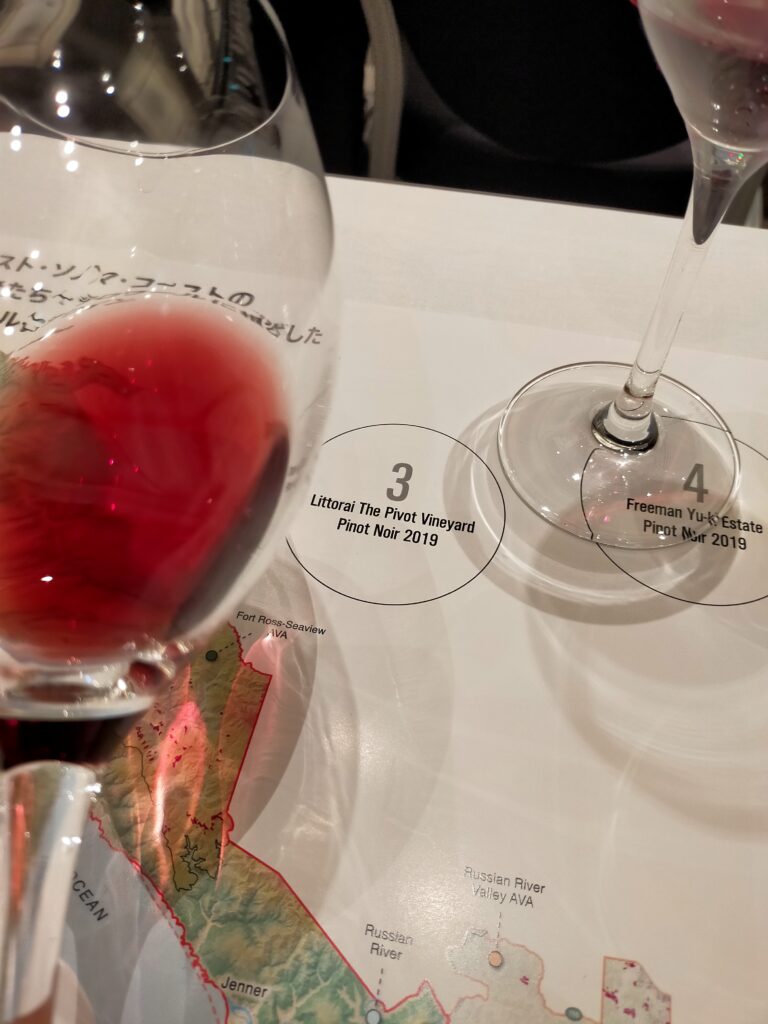
Elegant and Refined
Among the five Pinot Noirs today, this one has a relatively pale color with an air of transparency and sophistication.
The aroma is subtle and restrained rather than bold and opulent.
However, upon closer examination, it reveals intricate layers and complexity.
Notes of raspberry, cranberry, and red cherry dominate, accompanied by a refreshing hint of pomegranate with a slight metallic edge.
Herbal elements like thyme and rosemary add depth, alongside the delicate floral fragrance of wild roses.
A particularly striking aspect is the presence of bitter orange and ginger powder, which contribute additional richness to the bouquet.
Serious and Structured
Compared to the approachable and food-friendly Pinot Noir from Peay Vineyards, the Pivot Vineyard Pinot Noir carries a more serious and structured profile.
Its refined acidity is accompanied by firm tannins that provide a solid framework to the wine.
However, the tannins are not overly harsh—they are balanced by ripe yet fresh red fruit flavors.
A delicate grip from the tannins reinforces the wine’s sophistication, allowing it to express depth and complexity.
The multi-layered nature of the wine unfolds beautifully with every sip, showcasing the interplay of fruit, floral notes, and spice.
Classic Pairing with Duck
Pinot Noir is often paired with duck, and this particular wine has a classic feel to it.
For a French pairing, a roasted duck breast with bigarade sauce (orange-based sauce) would be a perfect match.
For a Japanese pairing, duck hot pot (kamo-nabe) would be an excellent choice.
The rich, umami-driven broth and delicate fattiness of the duck would complement the refined structure and nuanced flavors of this wine beautifully.
Freeman Vineyard & Winery
Introduction by Akiko Freeman
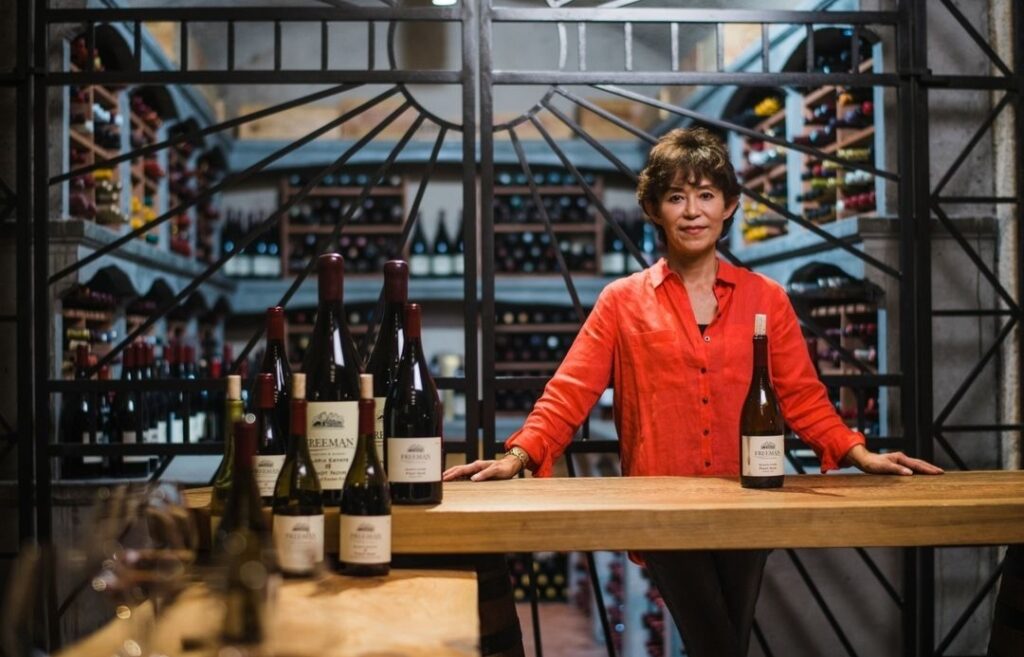
Akiko Freeman, owner of Freeman Vineyard & Winery, introduced herself and shared the story behind their Yu-Ki Vineyard.
Despite the name, “Yu-Ki” was not chosen because of organic farming (though they do practice it), but rather in honor of Akiko’s 16-year-old nephew in Tokyo, named Yu-Ki. Since Akiko and her husband have no direct heirs, they named the vineyard with the hope—but no pressure—that he might one day take over winemaking.
Fun fact: According to their website, Akiko and Ken Freeman first met due to a hurricane—how dramatic!
A Vineyard Surrounded by Redwoods
Akiko and her husband purchased this land in 2007.
Located on the steep slopes of Occidental, the vineyard sits atop a high mountain with a 20-degree incline, surrounded by dense redwood forests.
Interestingly, before their ownership (in the 1850s), sheep were once grazed on this land, leading to the clearing of redwood trees only in the vineyard’s central area.
Today, redwoods are protected, meaning landowners cannot cut them down to create new vineyard plots. However, by sheer luck, Akiko and Ken managed to acquire this exceptional site.
Different Clones and Rootstocks for Varied Soil Conditions
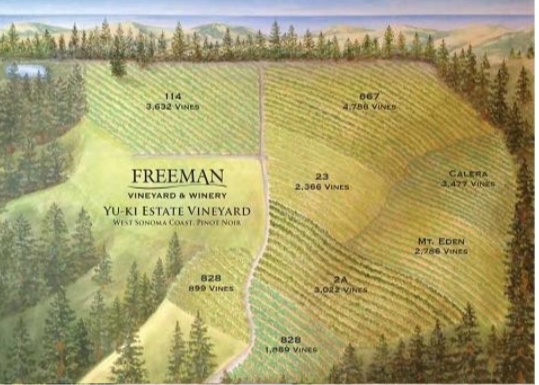
Their vineyard contains seven different Pinot Noir clones, strategically planted to adapt to the varied terrain.
The upper and lower sections of the vineyard have significantly different soil compositions—some areas are clay-heavy, while others are sandy.
To accommodate these differences, they selected different rootstocks, such as ones suited to clay-rich soils or others that can thrive in sandy, low-water environments.
Each rootstock is then grafted with Pinot Noir vines.
2019 Vintage
The 2019 vintage was marked by calm, favorable weather conditions, allowing for excellent grape quality.
The final wine is a blend of six different clones, with each clone harvested, fermented, and aged separately.
The best barrels were carefully chosen to create this blend.
Although yields were relatively low, the resulting wine turned out beautifully.
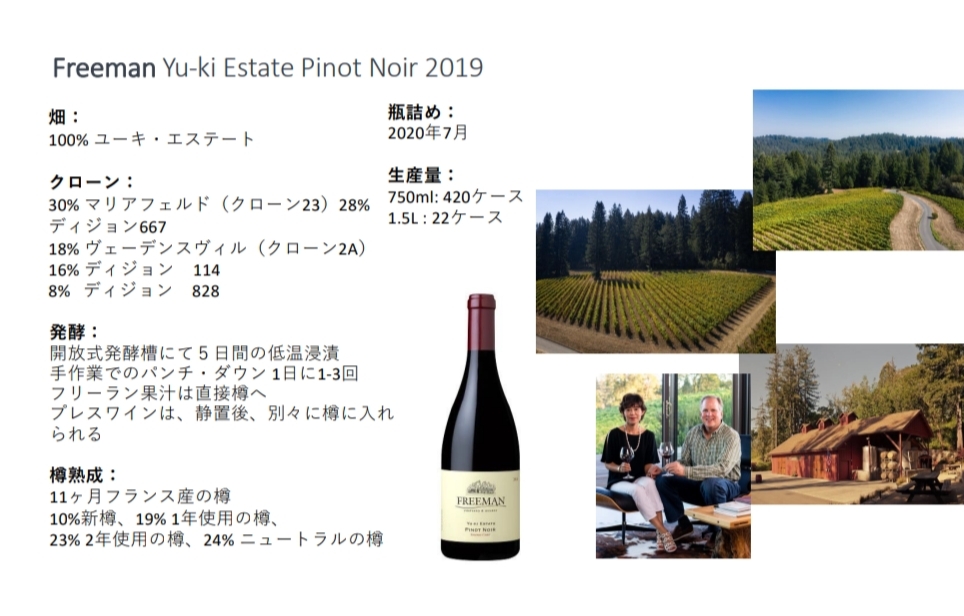
Freeman’s Winemaking Philosophy
Freeman practices organic viticulture, but their approach to winemaking is minimal intervention—letting the grapes shine naturally.
Akiko described their philosophy as “hard work in the vineyard, hands-off in the winery.”
Much like cooking, great ingredients lead to great results, provided nothing goes wrong in the process.
Their wines are aged in French oak barrels for 11 months, using only a modest proportion of new oak (around 25%), ensuring a gentle oak influence.
A Gentle Umami Like Dashi Kombu
Akiko personally noted that the wine carries subtle roasted tea notes, along with wild herbal characteristics like sage.
Given the vineyard’s proximity to the ocean and constant exposure to sea breezes, she speculated—though not confirmed—that the wine possesses a delicate umami akin to dashi kombu (kelp stock).
Freeman Yu-ki Estate Pinot Noir 2019
Layers of Harmonious Aromas
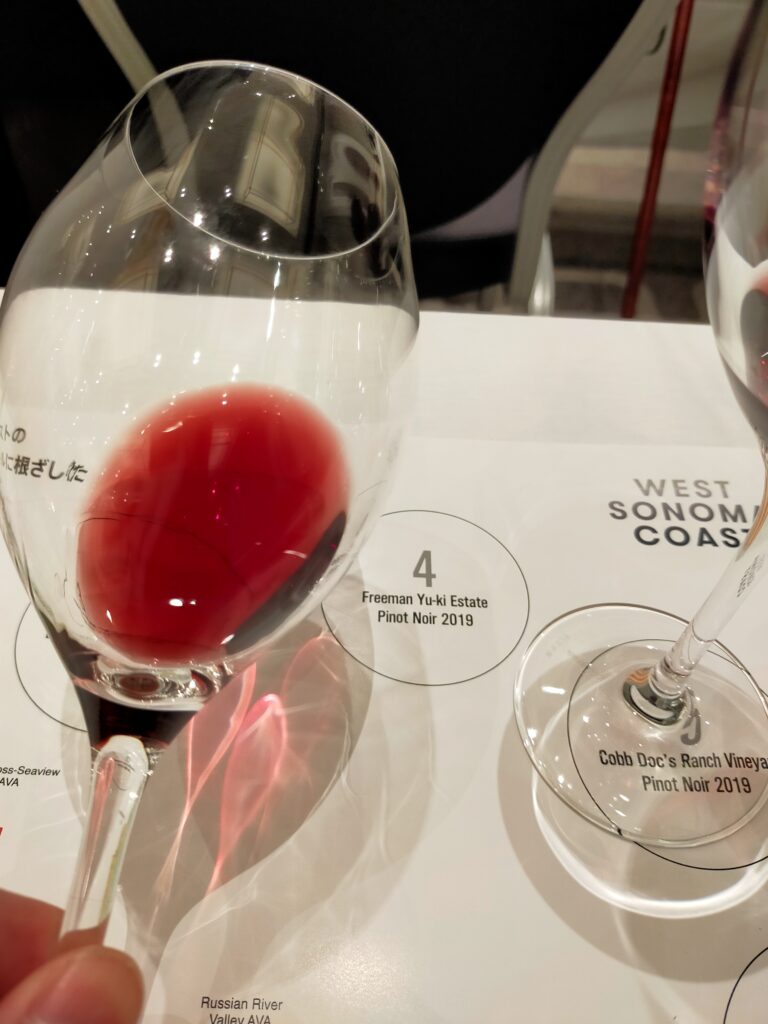
This wine exudes delicate yet refined aromas. While subtle, it carries remarkable depth.
Its first impression presents ripe red fruits, followed by elegant black tea leaves, reminiscent of Earl Grey—floral, yet complex.
Hints of sage add another dimension.
These elements weave together, creating a beautifully harmonized bouquet.
The gentle vanilla and clove notes from the oak seamlessly blend in, further highlighting the red fruit characteristics.
Much like seasoning in cooking, where a small amount of spice enhances the ingredients’ flavors, the use of oak in this wine is precise and well-balanced.
A Well-Developed, Exceptional Wine
Compared to the previous Pinot Noir (referencing Littorai Wines), this wine presents a distinctly different style.
The balance of acidity, sweetness, and umami is highly concentrated, offering impressive density and cohesion.
Its polished silky tannins, when combined with fresh acidity, create a velvety texture, making for a smooth and luxurious drinking experience.
Despite being from the 2019 vintage, which might still be considered young, this wine already feels beautifully developed and complete.
Though sommeliers typically avoid describing wines simply as “delicious,” this one is undeniably exceptional.
Beyond Meat Pairings – A Thoughtful Approach
Given its rich concentration of sweetness, umami, and acidity, this wine pairs wonderfully with meat. However, considering Kyoto’s culinary tradition, vegetables like eggplant would be an excellent choice.
Eggplant contains anthocyanins in its skin, similar to black grapes, making it an ideal match for red wine.
A great pairing would be Kamo eggplant, a juicy and thick variety from Kyoto, grilled to bring out its smoky essence and served den-miso style (with miso sauce).
With the rise of plant-based cuisine in Japan due to increasing international visitors, offering vegan and vegetarian-friendly pairing options is becoming increasingly important.
Dishes like mushroom-based pasta featuring porcini would also complement the wine beautifully, showcasing its depth and complexity.
This wine is versatile and restaurant-friendly, making it a fantastic choice for various dining experiences.
Cobb Wines
Introduction by Ross Cobb “My name is Ross Cobb, and I am both the winemaker and owner of Cobb Wines.
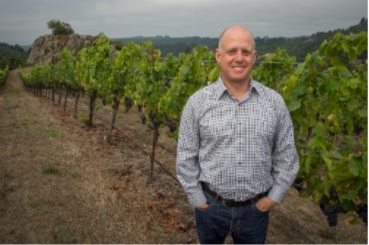
The Doc’s Ranch Vineyard, which you are tasting today, is an expansion of the original vineyard we established in 1989—it sits right next to the first plot we started with.”
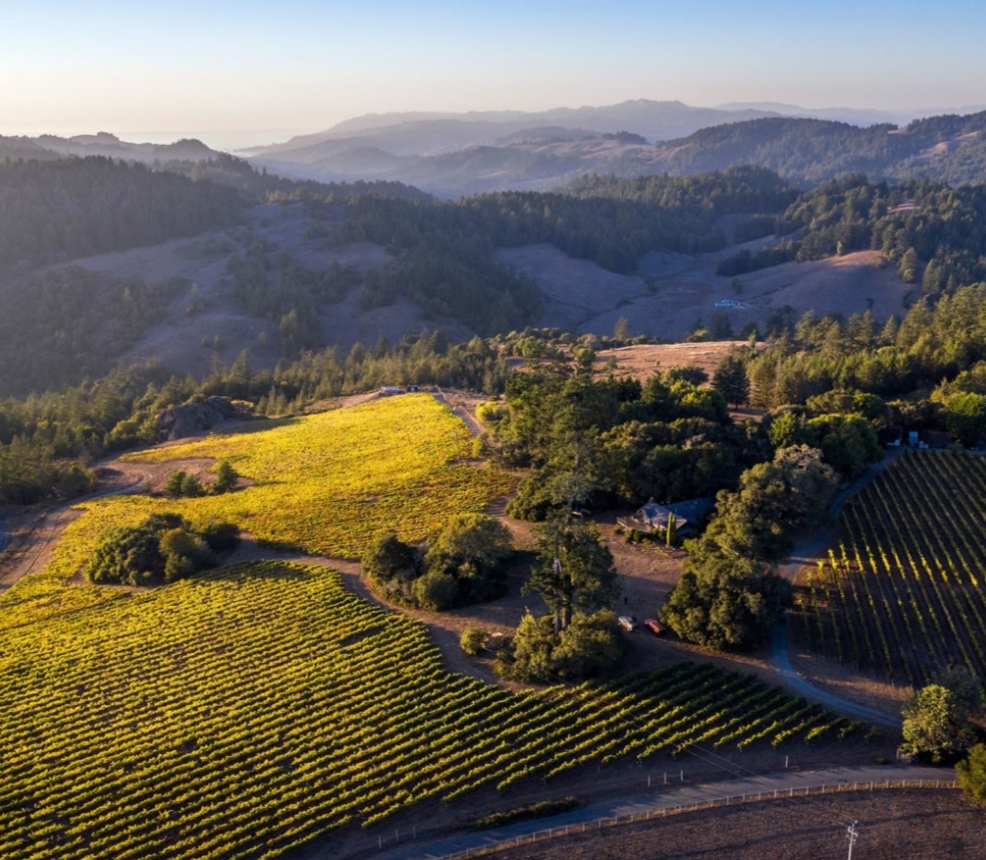
Vineyard Location & Characteristics The vineyard is slightly inland from Bodega Bay, at an elevation of 300–400 meters.
While the Coastlands Vineyard (planted in 1989) is dedicated entirely to Pinot Noir, Doc’s Ranch contains 10% Chardonnay.
Together, Coastlands and Doc’s Ranch cover approximately 23 acres.
A Self-Proclaimed “Burgundy Geek” Crafting His Ideal Wine
Ross shared his background, stating:
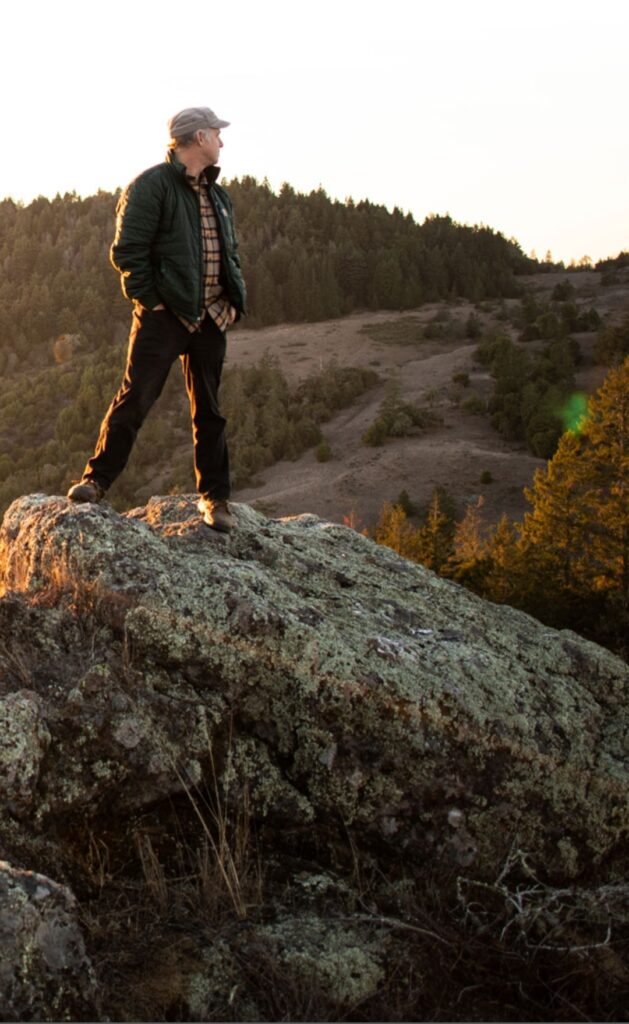
“I launched Cobb Wines in 2000, but just before that, I spent a month in Burgundy, tasting with 30 different winemakers. Over the years, I have returned 14 times, tasting with more than 150 winemakers.
So yes, I consider myself a bit of a Burgundy geek.
Studying alongside Burgundy producers helped highlight the clear differences between California and Burgundy.
Two key distinctions:
- California has abundant sunshine.
- The nearby Pacific Ocean is ice-cold.
Despite these contrasts, my goal is to create wines that capture the elegance of Burgundy, while embracing the unique appeal of the New World.”
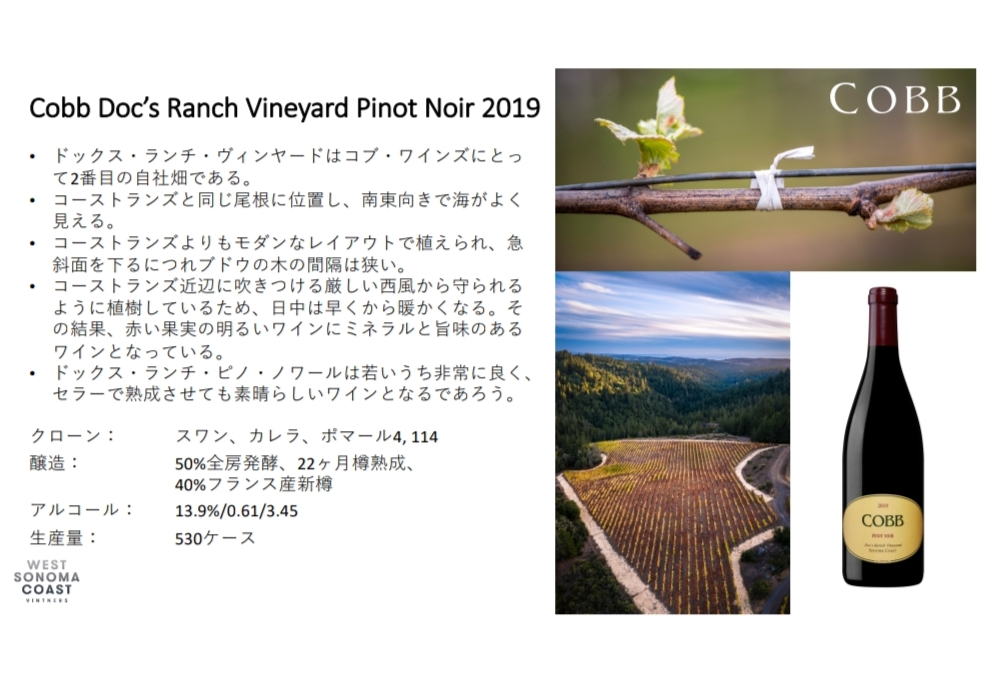
Cobb Doc’s Ranch Vineyard Pinot Noir 2019
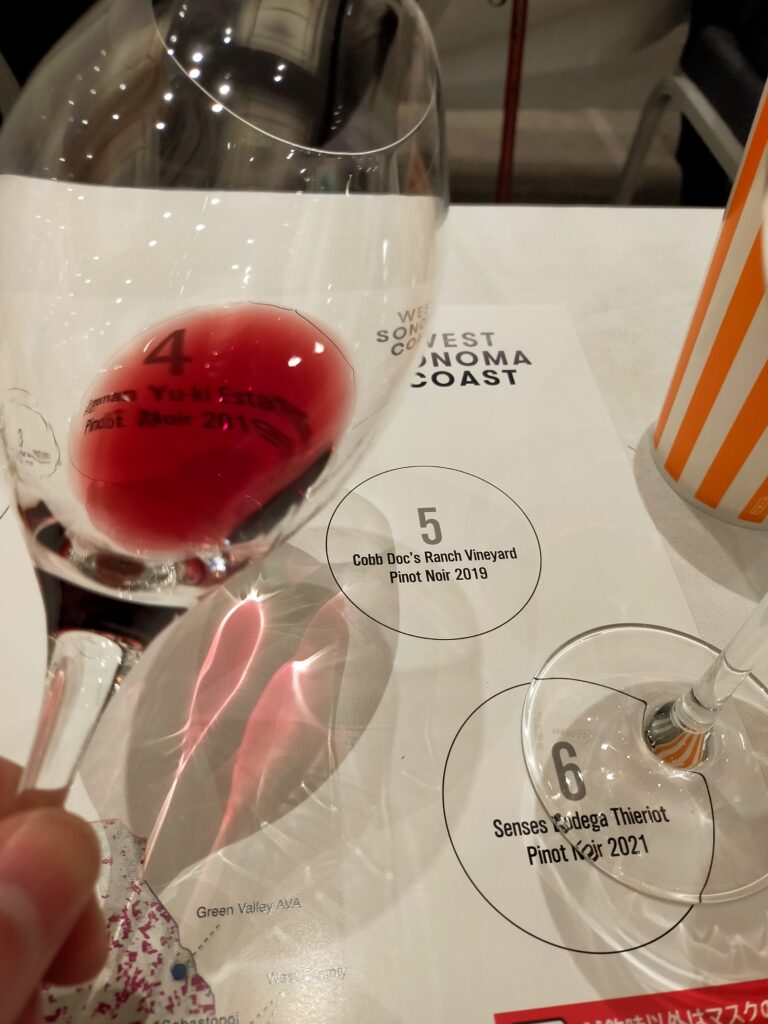
Phenolic Ripeness and Tension from Acidity
One of the standout characteristics of this wine is how true to the West Sonoma Coast style it feels.
Despite being made with 50% whole-cluster fermentation, there’s no greenness in its profile—even though the region is exceptionally cold.
As Andy Peay mentioned earlier, ripening isn’t just about sunlight—it’s also about the length of time the grapes stay on the vine (hang time).
This wine benefits from an extended hang time, resulting in phenolic ripeness, allowing whole-cluster fermentation to enhance floral aromatics and savory flavors rather than producing green notes.
On the palate, the wine expands broadly, delivering richness and structure.
While the fruit is ripe, the bright acidity provides taut tension, almost like a tight, stretched thread—adding a unique vibrancy to the experience.
In comparison, wines from the Russian River Valley tend to be more expansive and full-bodied, whereas this wine showcases heightened precision and focus—defining characteristics of West Sonoma Coast Pinot Noir.
Pairing with Black Shichimi Spice
Hints of aromatic bitters and Campari-like spice add an intriguing accent to the flavor profile.
Given its freshness and juiciness, this wine works beautifully as a versatile pairing with appetizers.
For a meat-based dish, beef tataki or carpaccio would be excellent choices.
Sprinkling black shichimi (Japanese seven-spice) over the dish would further enhance the wine’s spicy complexity, creating a seamless harmony between food and wine.
Senses Wines
Introduction by Christopher L. Strieter “My name is Christopher L. Strieter from Senses Wines.

Our vineyards and winery are located at a distance from Cobb Wines, with Yu-Ki Vineyard sitting between us and Cobb’s vineyards.
I was born and raised in this region. Along with my two childhood friends, we founded Senses Wines together.”
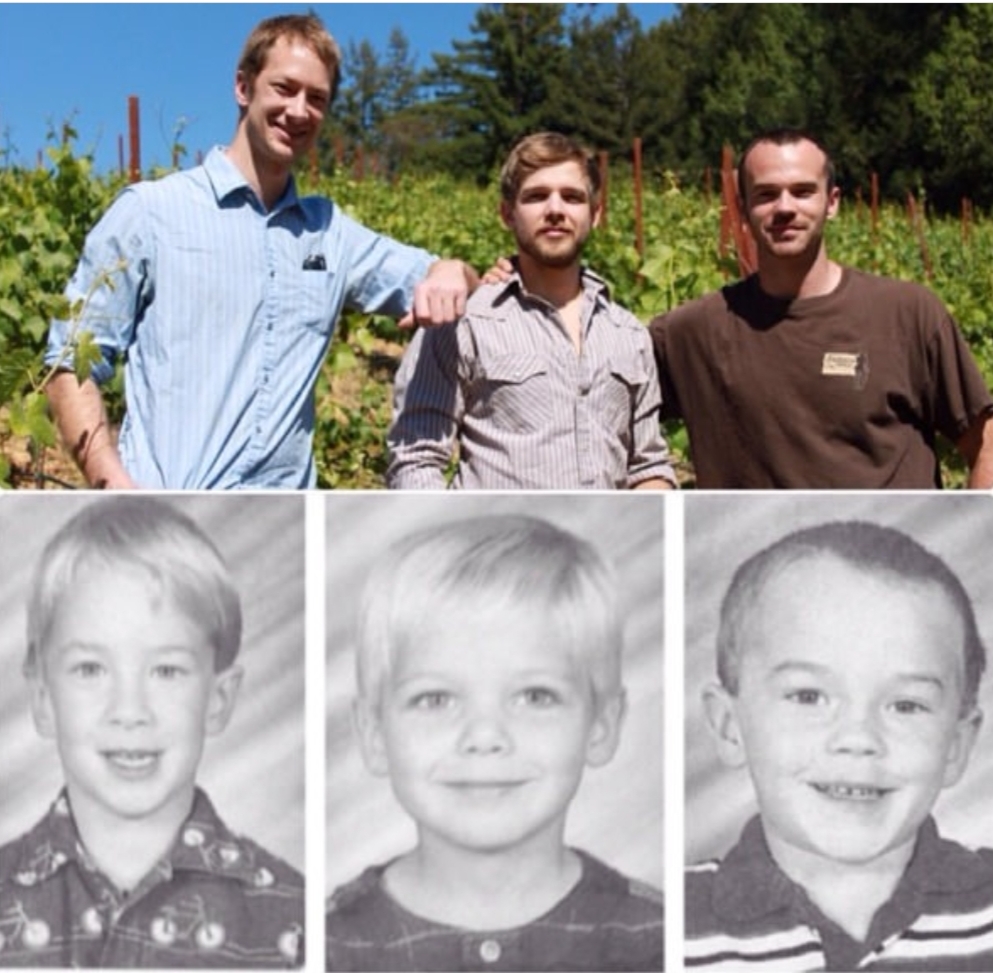
Establishing the Winery Senses Wines owns B.A. Thieriot Vineyard and Hillcrest Vineyard, and the core philosophy behind our winemaking is to faithfully express the individuality of each vineyard.
The three of us—Max, Myles, and myself—established this winery when we were just 22 years old, starting with very little knowledge of winemaking.
Our vision was simple: to create wines that truly reflect the character of our family’s vineyards.
Partnering with a Renowned Winemaker
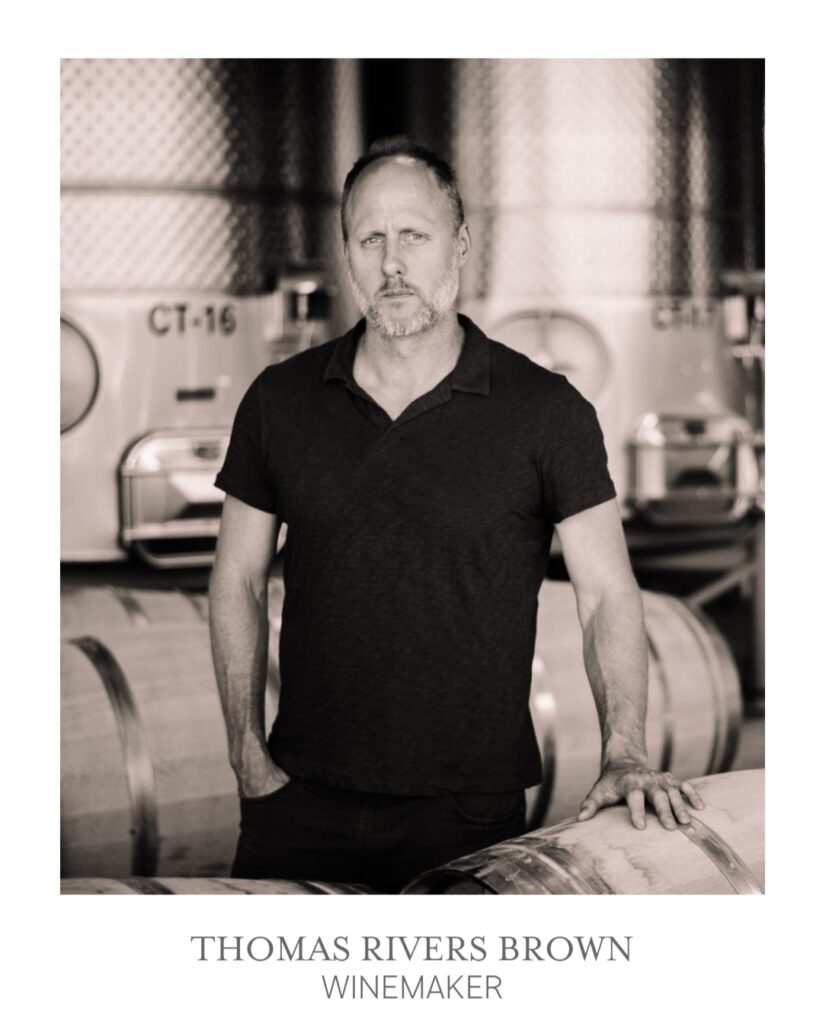
At the beginning, each vineyard yielded 200–300 cases, with a total production of around 2,000 cases.
Later, we partnered with Thomas Rivers Brown, a highly acclaimed winemaker. Today, we focus primarily on Pinot Noir and Chardonnay, while also cultivating 15 different grape varieties.
Note: Thomas Rivers Brown is a celebrated winemaker who has received 100-point scores from wine critic Robert Parker 25 times over the past decade.
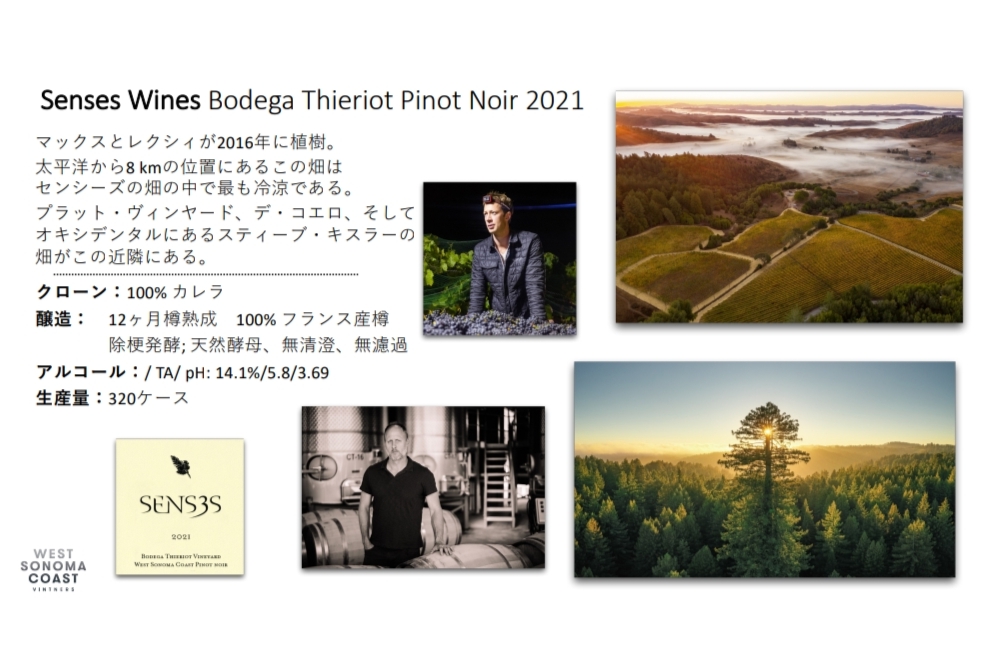
The Pinot Noir Being Tasted Today The wine presented today is the deepest-colored Pinot Noir in our lineup.
The cold coastal winds cause the grapes to grow smaller and more concentrated, resulting in intense flavors and structure.
Although the wine and its vines are still quite young, it exhibits perfume-like aromas with lavender notes, which I hope everyone enjoys.
Senses Wines Bodega Thieriot Pinot Noir 2021
Terroir-Driven Expression
This wine is a prime example of terroir-driven winemaking.
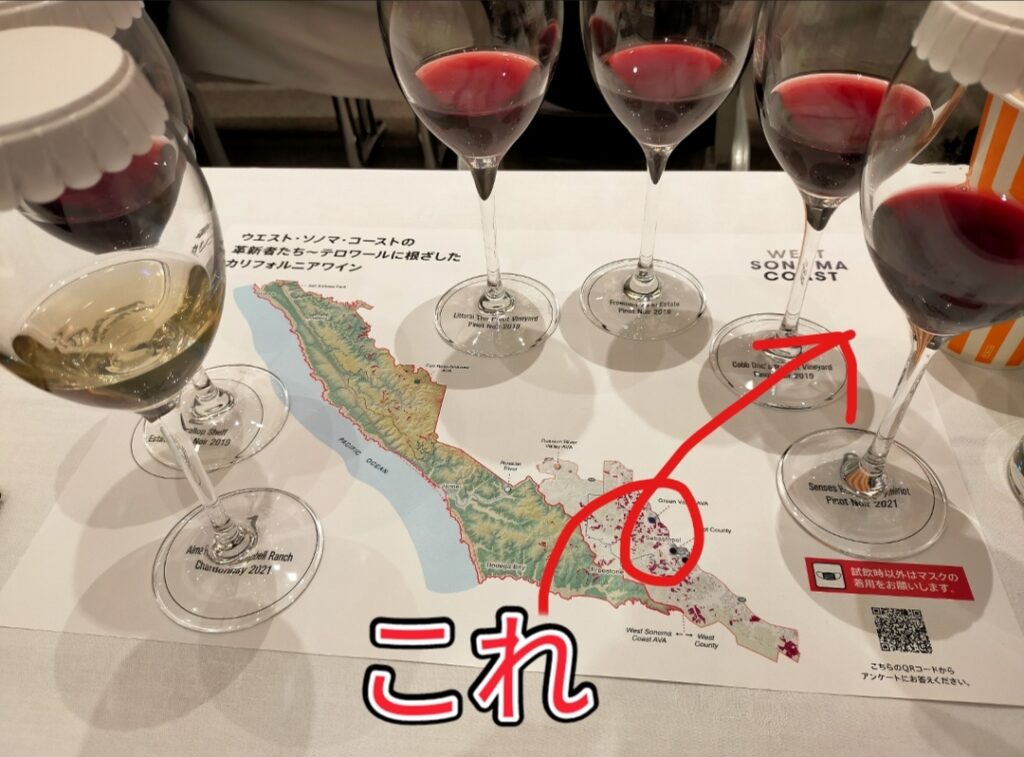
Visually, it stands out as the deepest-colored Pinot Noir among the lineup, reflecting the influence of the wind-exposed location in the West Sonoma Coast.
In windy regions, pollination can be disrupted, naturally reducing yields. However, the resulting grapes develop greater concentration.
Additionally, in such areas, the grape skins tend to thicken, protecting the seeds.
This leads to higher levels of pigment and tannin, contributing to the wine’s structured and bold profile.
Among the five Pinot Noirs tasted, this wine had the most tannic impression, clearly showcasing the distinct characteristics of its vineyard’s terroir.
Floral and Glamorous
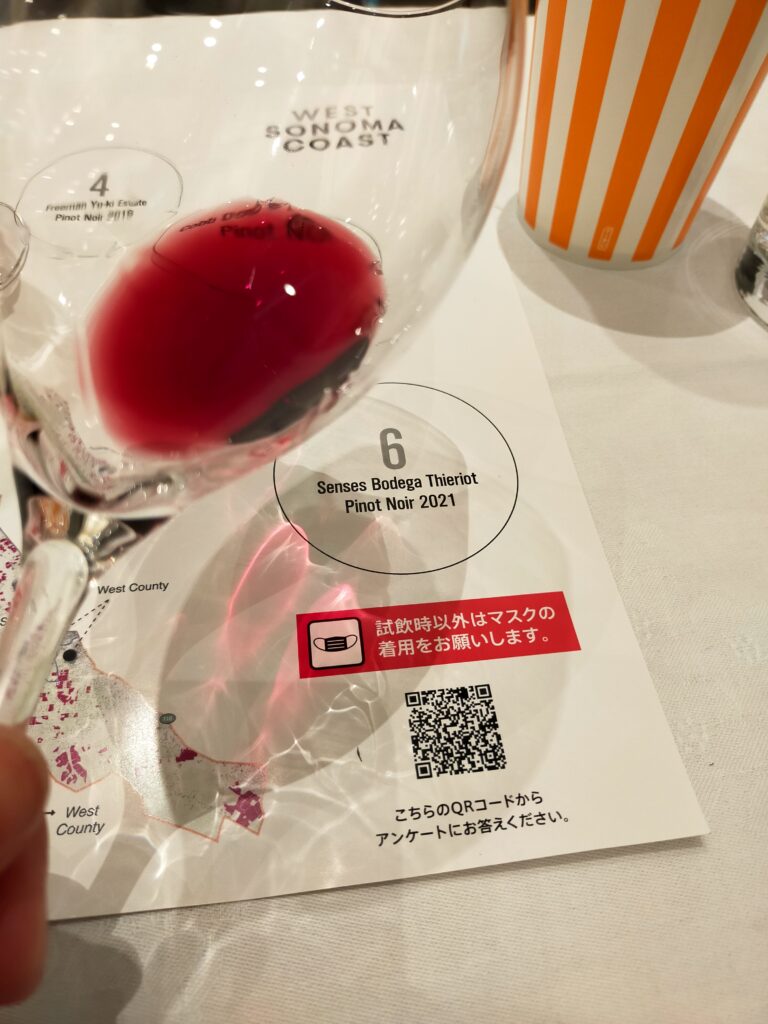
This wine exudes violet, lavender, and floral elegance.
Beyond red fruits, notes of dark fruits emerge, adding richness.
On the palate, its plump, juicy texture is reminiscent of biting into a ripe plum.
The wine’s concentrated body makes it bold and satisfying, exhibiting grandeur and depth.
Given the diversity of microclimates within the West Sonoma Coast, it is difficult to capture the region’s essence in a single description.
However, its complexity and diversity make it a wine-growing area to watch closely in the future.
Pairing with Game Meats
With its intense concentration, the wine pairs best with dishes of equal depth.
Seasonally, slow-cooked stews would be ideal.
A classic French pairing would be boeuf bourguignon (beef braised in red wine).
However, given the wine’s robust character, it would also complement wild game such as boar or venison, enhancing the rich complexity of both the dish and the wine.
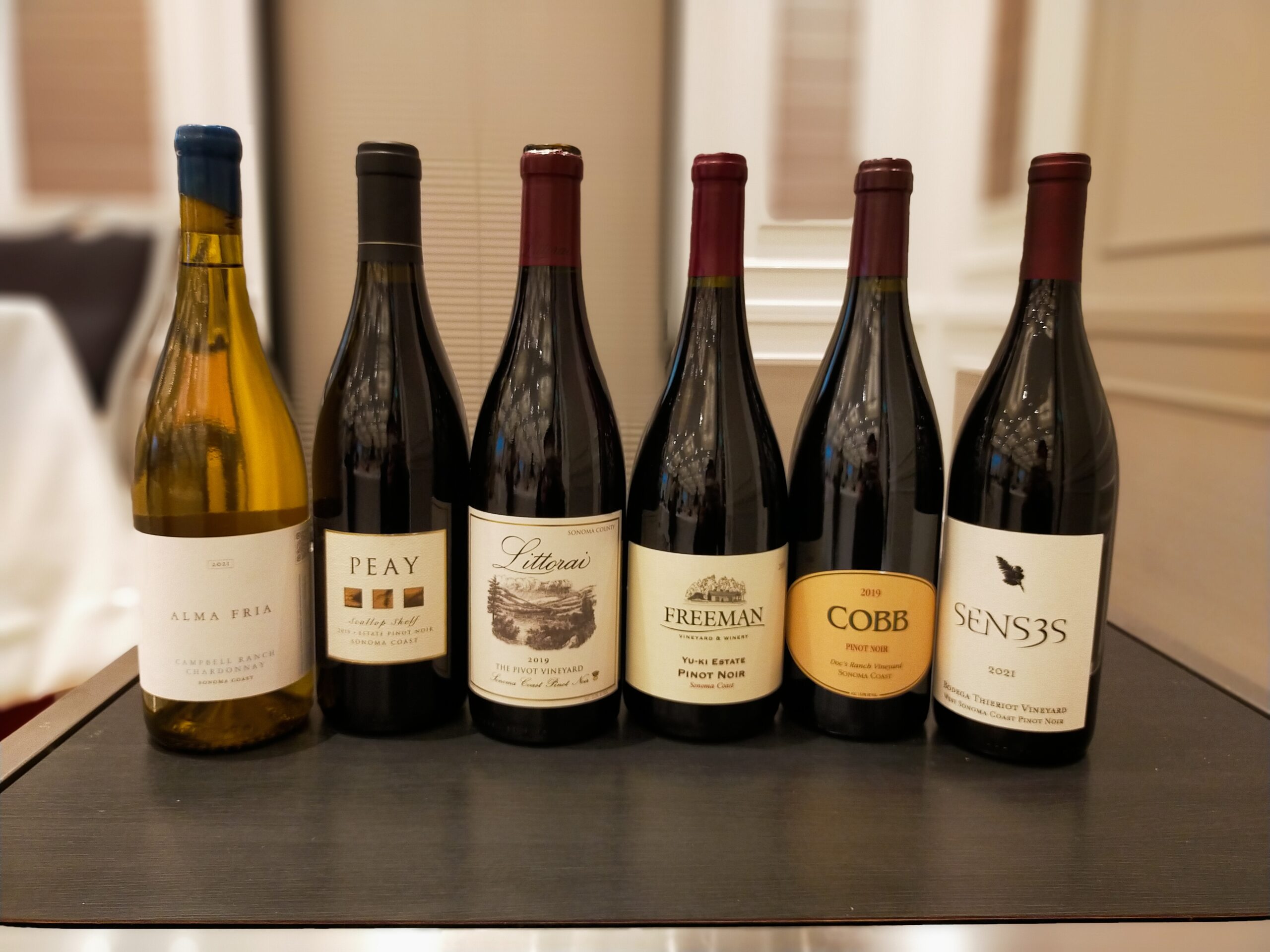


コメント